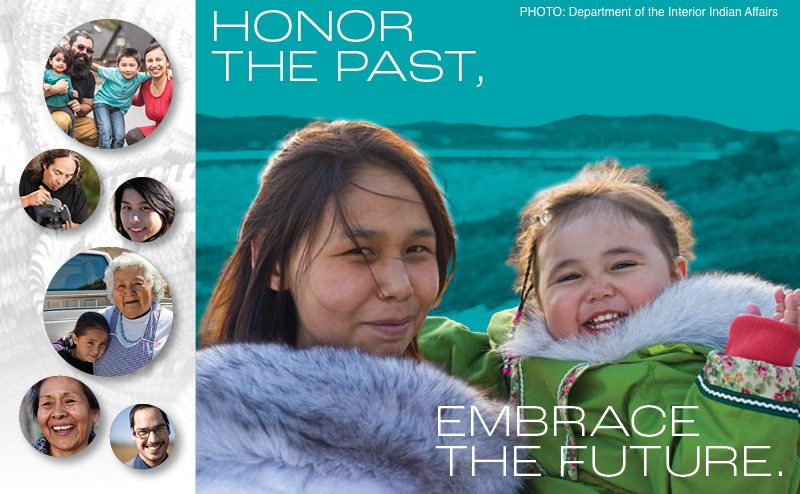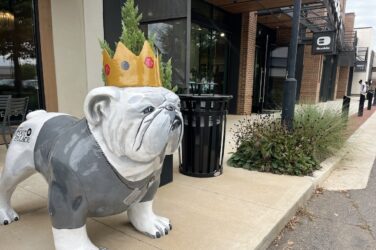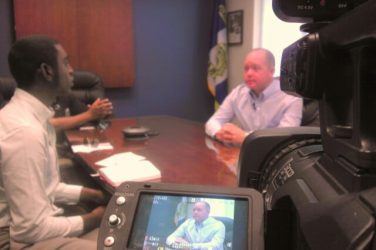On Oct. 31 of this year, President Donald Trump proclaimed the month of November as National Native American Heritage Month. The President called upon Americans to “commemorate this month with appropriate programs and activities and to celebrate Nov. 29, 2019, as Native American Heritage Day.” The commemoration began under President George H.W. Bush in 1990.
The month has events both for celebration and drawing attention to the community, according to the Department of the Interior Indian Affairs. Nov. 15 was #rockyourmocs day, which was a social media campaign in which individuals would wear moccasins (or a turquoise awareness ribbon) and post photos online. This movement was established in 2011 and has been celebrated since.
Agency officers were delighted to #RockYourMocs last week at Headquarters! pic.twitter.com/JO9yBwaHNt
— CIA (@CIA) November 18, 2019
Today is Rock Your Mocs day across the U.S. Established in 2011, this event raises visibility of indigenous people across the nation. Wear moccasins (or slippers) on November 15 as part of Alaska Native/Native American Heritage Month! #RockyourMocs #NativeAmericanHeritageMonth pic.twitter.com/VxHBum3dqM
— Alaska NPS (@AlaskaNPS) November 15, 2018
Red Shawl Day serves as recognition of the Violence Against Women Act of 2005, which “clarified that the unique legal relationship of the United States to Indian tribes creates a federal trust responsibility to assist tribal governments in safeguarding the lives of Native women.” The day is meant to draw attention to the loss of life by wearing the color red. This past Friday, Nov. 25, U.S. Attorney General William Barr announced a national plan to aid in addressing missing and murdered Native Americans, stating that “Native American women face particularly high rates of violence, with at least half suffering sexual or intimate-partner violence in their lifetime.”
We ask all employees 2 wear red to draw attention to the horrible acts of violence committed against #AmericanIndian & #AlaskaNative people, particularly women & children. BIA Southwest Regional Office is helping us honor #RedShawlDay as part of #NativeAmericanHeritageMonth2019. pic.twitter.com/EvqQAdPiiu
— Indian Affairs (@USIndianAffairs) November 19, 2019
The federal holiday of Thanksgiving also occurs in November. The fourth Thursday of the month is celebrated as a day of gratitude and feasting, but the origins of this holiday are debated. Thanksgiving has been celebrated since 1600s, but became a much more notable holiday in 1863 under President Abraham Lincoln.
While the children’s tale of “Squanto” and a shared feast is commonly depicted in storybooks and elementary school plays, the narratives are often from the perspective of the English settlers and the pilgrims.
The University of Georgia is home to the Institute of Native American Studies (INAS), which provides research and instruction. The institute offers studies of indigenous peoples of the Americas, from the perspectives of the people themselves. UGA offers courses that cover everything from Native American history to multiculturalism and music.
The director of INAS, Jace Weaver, says the traditional holiday story often erases particularity in that the teaching usually does not name the tribe or the individuals. The Native Americans present at the feast were Wampanoag, who aided the earliest English settlers, and had an alliance with Plymouth for political and military reasons. The feast was not a single lunch or dinner, but was most likely an event that spanned over three days. The famous “Squanto,” whose real name was Tisquantum, was a native of Patuxet.
The Wampanoag were able to help settlers with food gathering, as the story goes, but the settlers were able to offer military protection to the Wampanoag from other tribes.
It was part of the diplomatic relations between the Pilgrims and the Wampanoag,” says Weaver.
Weaver says that Native Americans often celebrate on Thanksgiving as well, some adhere to the “traditional” American celebration while others use the day as a day of mourning. According to the United States Census, only 1.7% of the population is American Indian or Alaskan Native (in combination with other races), the population of American Indian/Alaskan Native alone is 0.9%. This is likely a factor in how widespread information on commemorations and events is, as the discourse often only occurs within the Native American community itself.
The #rockyourmocs trend, for example, trended on Facebook and Twitter, but Weaver noted that only people who are friends on social media would see this and not many others.
Marisa Hernandez is a senior majoring in journalism in the Grady College of Journalism and Mass Communication at the University of Georgia.









Show Comments (0)